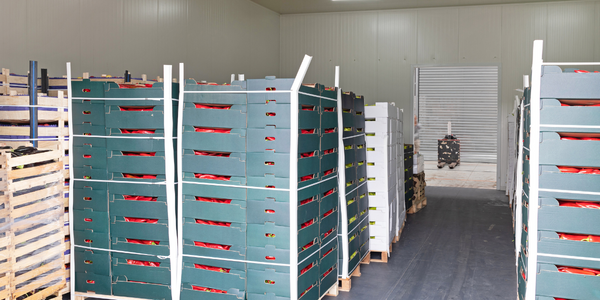Download PDF
Sargento Leverages BluJay Solutions to Reduce Freight Spend and Improve Visibility
Technology Category
- Application Infrastructure & Middleware - Data Exchange & Integration
- Functional Applications - Transportation Management Systems (TMS)
Applicable Industries
- Food & Beverage
Applicable Functions
- Logistics & Transportation
- Warehouse & Inventory Management
Use Cases
- Fleet Management
- Predictive Replenishment
- Supply Chain Visibility
Services
- Software Design & Engineering Services
- System Integration
The Challenge
Sargento’s existing Transportation Management System (TMS) solution was not able to meet operational requirements. Orders were planned into shipments without considering cost, service, or contractual commitments to carriers, and there was an inability to accurately allocate transportation costs at the order level. Sargento chose to implement a flexible, scalable multimodal transportation management system that would meet their operational needs today and in the future. Sargento established a list of goals for a transportation management system: Integrate with 30 carriers, Ship approximately 3,000 orders per month, Transport 24 million pounds of products on average per month, Integrate with existing supply chain software, and Straight-through processing of order data via EDI.
About The Customer
Sargento Foods Inc. is a family-owned business, employing approximately 1,300 people at four Wisconsin facilities, one in Washington, and one in South Dakota. They are one of the largest converters of cheese in the United States, offering a variety of cheese products marketed through four business divisions: Consumer Products Division, Food Service Division, Food Ingredients Division, and Culinary Solutions. Founded in 1953 and headquartered in Plymouth, WI, Sargento has grown to become a significant player in the cheese industry, known for its innovation and quality products. The company prides itself on its family-owned values and commitment to excellence, which has helped it maintain a strong market presence over the decades.
The Solution
Sargento improved operational efficiencies by eliminating manual processes and non-value-added services. In the past, if a carrier charged an incorrect transportation cost, Sargento did not have the visibility to correct these charges prior to being invoiced for them. Sargento would calculate the rates, but were often invoiced using a different rate. As a result, they had a difficult time reconciling payments. Since the implementation of the BluJay platform, each carrier has a contract in the contract management module of the system, where their rates are locked and paid accordingly with no discrepancies. Not only has the system helped Sargento manage costs, but the automation has also reduced the manpower required to reconcile payments from 15 hours per week to six hours per week, resulting in a 60 percent reduction in administrative costs for freight payment. Accruals are done as soon as the product is loaded at the distribution center. The billing information is fed to the finance department and the accrual of transportation costs is done in real-time. Accessorials that occur during delivery are captured as part of the invoicing process and are also allocated down to the order level. This helps to ensure the real cost of freight is captured for each customer. With the BluJay platform, they are now able to evaluate charges during the year to better determine what the customer charges should be the following year, taking into account the back-end fees that each customer was accumulating. This allows Sargento to accurately allocate costs back to their customers and helps ensure Sargento remains profitable.
Operational Impact
Quantitative Benefit
Related Case Studies.

Case Study
The Kellogg Company
Kellogg keeps a close eye on its trade spend, analyzing large volumes of data and running complex simulations to predict which promotional activities will be the most effective. Kellogg needed to decrease the trade spend but its traditional relational database on premises could not keep up with the pace of demand.

Case Study
HEINEKEN Uses the Cloud to Reach 10.5 Million Consumers
For 2012 campaign, the Bond promotion, it planned to launch the campaign at the same time everywhere on the planet. That created unprecedented challenges for HEINEKEN—nowhere more so than in its technology operation. The primary digital content for the campaign was a 100-megabyte movie that had to play flawlessly for millions of viewers worldwide. After all, Bond never fails. No one was going to tolerate a technology failure that might bruise his brand.Previously, HEINEKEN had supported digital media at its outsourced datacenter. But that datacenter lacked the computing resources HEINEKEN needed, and building them—especially to support peak traffic that would total millions of simultaneous hits—would have been both time-consuming and expensive. Nor would it have provided the geographic reach that HEINEKEN needed to minimize latency worldwide.

Case Study
Energy Management System at Sugar Industry
The company wanted to use the information from the system to claim under the renewable energy certificate scheme. The benefit to the company under the renewable energy certificates is Rs 75 million a year. To enable the above, an end-to-end solution for load monitoring, consumption monitoring, online data monitoring, automatic meter data acquisition which can be exported to SAP and other applications is required.

Case Study
Coca Cola Swaziland Conco Case Study
Coco Cola Swaziland, South Africa would like to find a solution that would enable the following results: - Reduce energy consumption by 20% in one year. - Formulate a series of strategic initiatives that would enlist the commitment of corporate management and create employee awareness while helping meet departmental targets and investing in tools that assist with energy management. - Formulate a series of tactical initiatives that would optimize energy usage on the shop floor. These would include charging forklifts and running cold rooms only during off-peak periods, running the dust extractors only during working hours and basing lights and air-conditioning on someone’s presence. - Increase visibility into the factory and other processes. - Enable limited, non-intrusive control functions for certain processes.

Case Study
Temperature Monitoring for Restaurant Food Storage
When it came to implementing a solution, Mr. Nesbitt had an idea of what functionality that he wanted. Although not mandated by Health Canada, Mr. Nesbitt wanted to ensure quality control issues met the highest possible standards as part of his commitment to top-of-class food services. This wish list included an easy-to use temperature-monitoring system that could provide a visible display of the temperatures of all of his refrigerators and freezers, including historical information so that he could review the performance of his equipment. It also had to provide alert notification (but email alerts and SMS text message alerts) to alert key staff in the event that a cooling system was exceeding pre-set warning limits.

Case Study
Coca-Cola Refreshments, U.S.
Coca-Cola Refreshments owns and manages Coca-Cola branded refrigerators in retail establishments. Legacy systems were used to locate equipment information by logging onto multiple servers which took up to 8 hours to update information on 30-40 units. The company had no overall visibility into equipment status or maintenance history.




